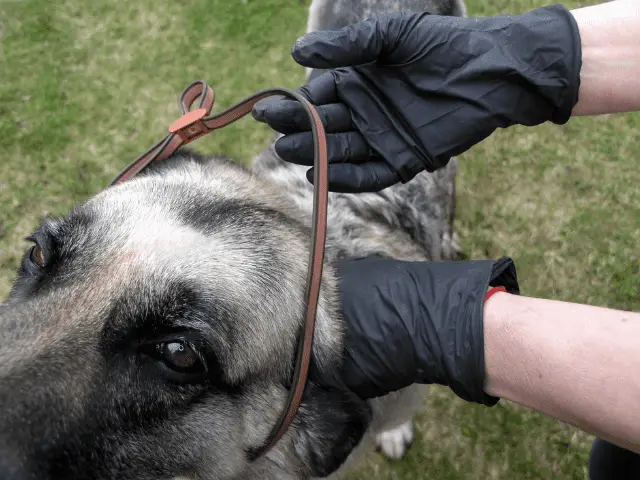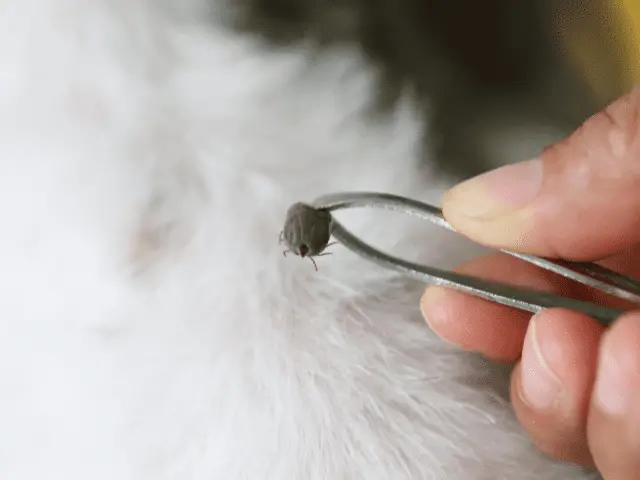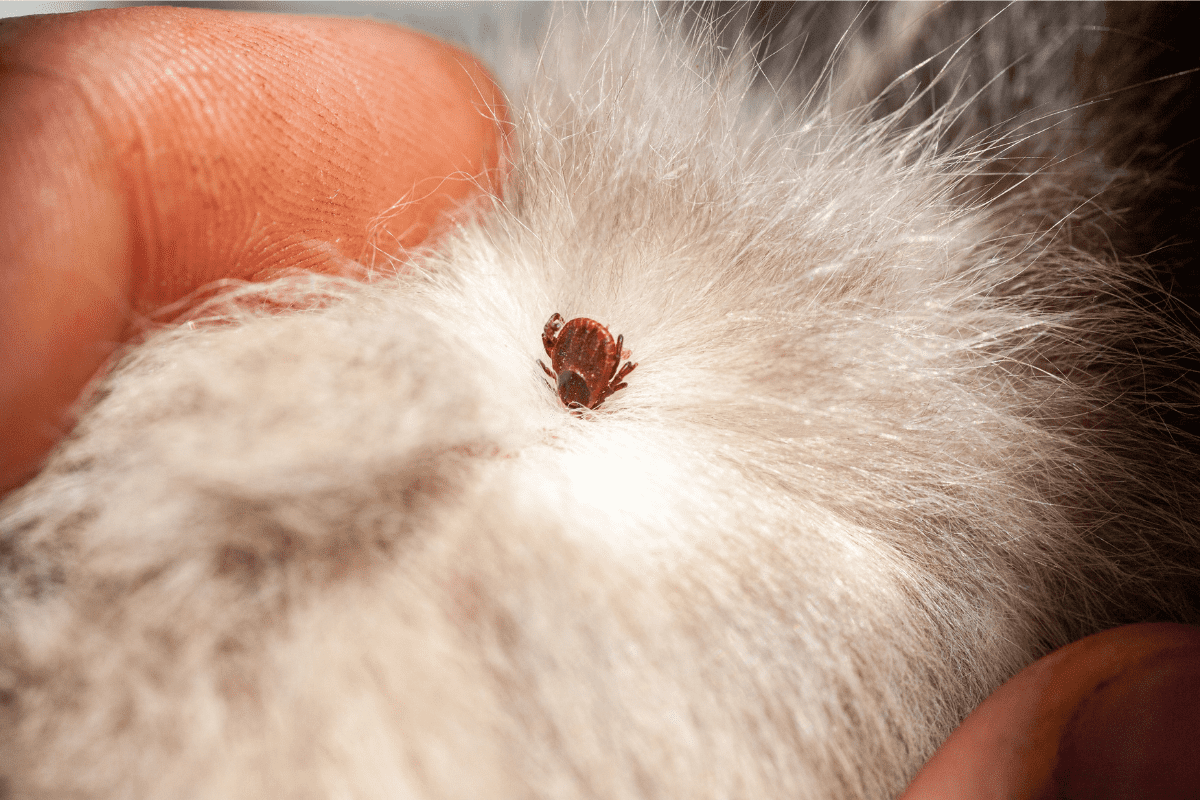If you spend any amount of time outdoors with your dog, you’re probably well aware of ticks. These little pests are everywhere during the spring and summer, and they can make your dog sick if they manage to latch on and start feeding on their blood.
When hiking with your dog, you should check them for ticks before, during, and after the hike. There are several tick-borne diseases that can make your dog very ill. The sooner you find and remove ticks, the lower the likelihood of transmission.
Checking Your Dog for Ticks on Hikes
Whether you go hiking with your dog on trails or just take them outside to play, it’s important that you take precautions against ticks. Not only can ticks carry Lyme disease, but they also can pass along several other diseases and parasites.
If your dog is out of sight at any point during your hike, check them carefully when you get back home. They could have picked up ticks while in wooded areas or when climbing rocky hillsides.
Because ticks look like little black dots, it may be difficult to spot one if it’s latched onto your dog’s skin. However, a quick look at their ears, paws, and lower legs should give you an idea of whether there are any insects attached.
Some other areas ticks can attach themselves include warm and dark areas such as:
- Between your dog’s toes
- In between their ears
- Behind their ears
- On their belly
- On their chest and face.
To check your dog for ticks, start by running your fingers through any thick or wiry hair on its head and neck area, as well as in between its toes and around its belly.
If you see any insects that feel like a fleck of dirt or sand under your fingernail, take another look at them. Ticks are tiny and are typically brown or black in color, so they’re difficult to spot if they’re latched onto fur rather than skin.
When checking your dog for ticks, it’s important that you do it thoroughly. Just because you don’t find any ticks at first doesn’t mean they aren’t present.
Continue searching until you see every part of your dog. Once you spot an attached tick, grab some tweezers and pull it out gently but firmly, making sure not to squash it in order to avoid getting bitten or infecting your dog with harmful bacteria or parasites.
Be extra careful if there are ticks on sensitive areas such as under their toes or close to their eyes and ears—if one accidentally falls off into these areas, consult a veterinarian immediately about removal options.
Protecting your dog against ticks

Although there are some serious tick-borne diseases that can occur, most tick bites are harmless. Regardless of how big or small your dog is, or what breed they are, ticks will attach and begin biting if they feel like they have time.
Here are some tips for protecting your dog against ticks:
- Keep them on the trail and away from dense vegetation
- Consult your veterinarian about a flea and tick preventative
- Make sure your dog’s fur is clean and brushed
Checking your dog before, during, and after a hike
Before you head out on your hike, check your dog for ticks by running your hands through their fur and looking closely at their ears. Inspecting your pet before heading out will give you peace of mind and make it easier to spot a tick if one is there.
While hiking, check your dog’s ears and paws regularly. If they start scratching themselves or playing with their ears or paws excessively, it could be a sign that they have ticks (or fleas).
And finally, if you’re going to be out in nature where ticks are prevalent, take an extra five minutes when you get home from hiking and search them carefully again. Your pup will be sleepy so it should be an easy search!
If you find one, try not to squeeze it. Gently remove it with your fingers or tweezers and drop it on some tape. Then wash your hands thoroughly with soap and warm water and keep an eye on your dog to watch for any signs of a tick-borne illness.
Signs that it’s time to treat your dog for ticks

Dogs who’ve contracted Lyme disease may exhibit symptoms such as loss of appetite, fever, joint pain, and lameness. If you notice any behavioral changes in your dog after he’s been on a hike or another outdoor excursion, make sure to check his body thoroughly.
Use a good tick-checking technique when inspecting your dog after an outing. Be sure not to pull too hard when removing a tick—there’s some evidence that if ticks are removed too quickly, they can vomit into their host and infect them with more serious diseases.
Since ticks can be tricky to spot, you may want to enlist help from an experienced veterinarian or your local pet store if you’re not sure whether or not your dog has ticks. Throughout the year you should treat your dog with a flea and tick preventative monthly.
Dealing with tick-borne diseases
It’s important that you deal with ticks quickly if you find one attached to your dog. If you’re out in the woods and discover a tick on your dog, chances are it’s already been feeding for quite some time. The longer it feeds, generally speaking, the more dangerous its bite will be.
Dogs can contract several kinds of tick-borne diseases, including anaplasmosis, ehrlichiosis, and Lyme disease. Each one is serious in its own way, so it’s vital that you be aware of them all.
If your dog contracts a tick-borne disease, you’ll need to make sure they get medical attention immediately. Dogs with anaplasmosis or ehrlichiosis will usually show flu-like symptoms; dogs with Lyme disease may not even show any symptoms right away. These diseases can affect your dog for years if left untreated!
You can also opt for a blood test that checks your dog’s tick-borne disease levels; it will usually give you an immediate result. While no two dogs are alike, there are general guidelines based on breed and age that can help you make educated decisions about checking your dog for ticks after hiking.
Some breeds may be more prone to certain diseases than others, but all tick-borne diseases should be taken seriously no matter what breed of dog you have. If you suspect your dog may have a tick-borne disease, contact your veterinarian immediately.
Final Thoughts
Prevention is the best practice for fleas and ticks! Check out our article that goes into more detail about keeping ticks off of your dog while hiking as well as our guide on the best way to remove ticks from your dog if you do find them.
Also, make sure you check yourself for ticks! They can crawl from your dog to you or vice versa. Humans can also get some tick-borne illnesses like Lyme’s Disease.

